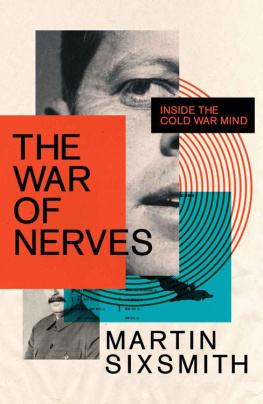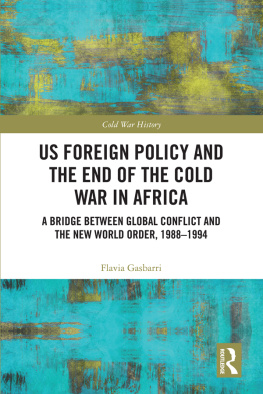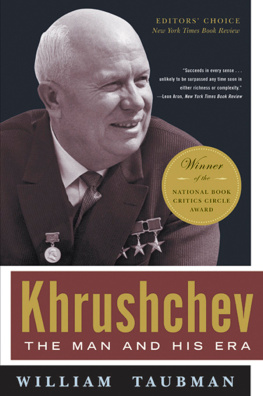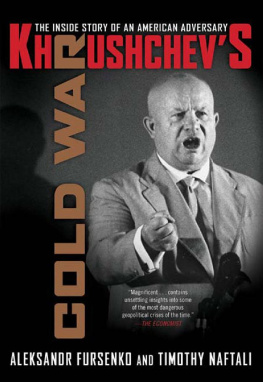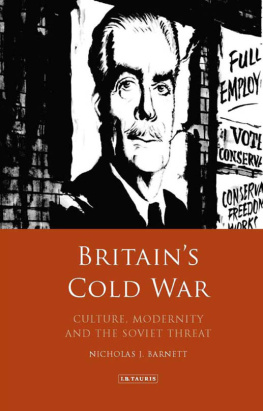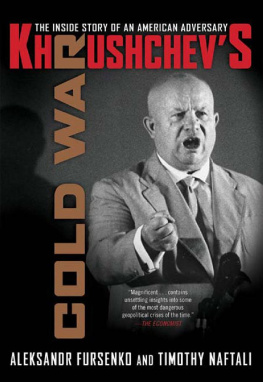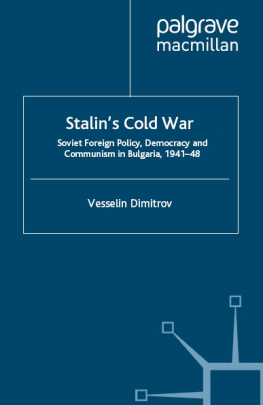THE WAR OF NERVES
ALSO BY MARTIN SIXSMITH
The Lost Child of Philomena Lee
Russia: A 1,000-Year Chronicle of the Wild East
THE WAR OF NERVES
I NSIDE THE C OLD W AR M IND
MARTIN SIXSMITH
WITH DANIEL SIXSMITH

First published in Great Britain in 2021 by
Profile Books Ltd
29 Cloth Fair
London
EC1A 7JQ
www.profilebooks.com
Published in association with Wellcome Collection

183 Euston Road
London NW1 2BE
www.wellcomecollection.org
Copyright Martin Sixsmith, 2021
While care has been taken to ensure that the web links in this book are accurate at the time of publication, the publisher cannot guarantee that these links remain viable. The author and publisher assume no responsibility for the content of websites that are not their own.
The words of Colonel Paul Tibbets (p. ) are reproduced by kind permission of the Joseph Papalia Collection, courtesy of the Atomic Heritage Foundation and the National Museum of Nuclear Science and History.
1 3 5 7 9 10 8 6 4 2
Typeset in Dante by MacGuru Ltd
Printed and bound in Great Britain by
Clays Ltd, Elcograf S.p.A.
The moral right of the author has been asserted.
All rights reserved. Without limiting the rights under copyright reserved above, no part of this publication may be reproduced, stored or introduced into a retrieval system, or transmitted, in any form or by any means (electronic, mechanical, photocopying, recording or otherwise), without the prior written permission of both the copyright owner and the publisher of this book.
A CIP catalogue record for this book is available from the British Library.
ISBN 978 1 78125 912 2
eISBN 978 1 78283 382 6
Audio ISBN 978 1 78283 932 3
AUTHORS NOTE
There is a long and ignoble tradition of writers who devour the work of their researchers and publish it as their own. Academics are notoriously inclined to put their name on papers substantially written by their students. Acknowledgements can be slight and grudging. But I have the opposite problem. So brilliant and assiduous has the work of my researcher been that I would dearly wish to see him given a co-author credit for this book. The fact that he is my son, Daniel Sixsmith, of whom I am rather fond, plays no part in my unbounded admiration for his historical knowledge, scholarly expertise and endlessly creative originality.
London, February 2021
C ONTENTS
PREFACE
The Cold War pitted the United States of America and the Soviet Union against one another for the best part of fifty years. From the end of the Second World War to the dissolution of the USSR in 1991, the psychodrama playing out between the superpowers held the world in thrall. The Cold War, both sides declared, was a contest of competing social, economic, political and ethical systems, each of them professing a monopoly on wisdom and the keys to humankinds future. Washington and Moscow explored and constructed their own identities in opposition to and competition with each other; each sought to persuade, cajole or intimidate the rest of the globe to support their cause. It was a conflict in which the battleground was, to an unprecedented extent, the human mind: the aim was control not just of territory, resources and power, but of loyalties, belief and the nature of reality.
Histories of the Cold War charting facts and dates, speeches and events, stalemates and stand-offs are not in short supply. But what strikes me as most remarkable and what this book proposes to examine is the way this extraordinary period shaped not just the experiences but the thinking of millions of people, from the politicians at the top to the ordinary men and women scurrying down the steps to their basement fallout shelters; and how some of the mental processes inculcated by the Cold War continue to influence the way we see the world today.
With no direct military confrontation between the two superpowers, neither side could achieve physical domination over the other.Instead, regimes in East and West deployed psychological means to keep their domestic population and sometimes their enemies population convinced of their superiority. The timing was propitious. At the start of the twentieth century, the once arcane science of psychology had begun to percolate into popular awareness. Freudian psychoanalysis penetrated modern culture; behavioural psychology colonised the economy, administration and government. Companies used it for the organisation of their workforce and factories, governments in the planning of their educational systems, the army for intelligence and aptitude tests. For the competing powers, psychology was a tool: a means to convince the world, perhaps at times themselves, of their own righteousness and their enemys iniquity. They used overt propaganda state media; radio, television, posters but also more nuanced messages conveyed through ostensibly independent channels. Literature, art, music and cinema were co-opted by both the USSR and the USA (the former more blatantly than the latter, but both with stubborn persistence) to embody the message that we are right and they are wrong.
Each side strove to understand the thinking of the other in an ongoing guessing game that at times strained the boundaries of what psychologists call Theory of Mind the ability to understand that others may think differently from oneself. Confirmation bias, the tendency to select only that information which confirms our own beliefs, abounded: the minutes of meetings stored in government archives showed ministers, generals and bureaucrats sifting the evidence of enemy thinking then unerringly selecting only those pieces that supported what they had already decided to be the case.
In both East and West, shorn of direct experience of what life was like across the divide, people largely believed what they were told about the other, albeit with fluctuating degrees of conviction. Both sides experienced a pervasive fear stemming from a global tension between two systems, each with the means to destroy the planet. Years of rumbling international hostility affected individual mental well-being, manifesting in social paranoia, catastrophising, and surges of collective hysteria.
In 1969, twelve months after Soviet tanks had crushed the Prague Spring, I travelled as a schoolboy through a divided Europe. The drama of the Sputnik years had persuaded our school to hire an adventurous young Cambridge graduate to teach us Russian. That summer he took us on a series of trains through France, Belgium, West Germany, then on into the Soviet Union. We were bolshie grammar school boys going boldly, boorishly to the mysterious land whose language we had been learning, eager to meet the Russian babushkas , soldaty and studentkas we had been declining in number, gender and case for the past two years.
When our train crossed the border from Poland into the Soviet Union at Brest, in what is now Belarus, we shuffled onto a windswept platform to see our carriages hoisted aloft while new bogies for the wide-gauge Soviet tracks, selected long ago to baffle western invaders, were shunted under them. Eighteen hours later we were on a smoke-spewing Intourist bus rattling down Moscows traffic-free six-lane boulevards to our hotel beside the Kremlin.
Howard Cooper was allocated room 107, where we deciphered a plaque to its previous occupants, Vladimir Lenin and Nadezhda Krupskaya. To our great delight, we were woken in the night by phone calls from sultry-voiced ladies proposing things more interesting than a history lesson. When our teacher warned us under no circumstances to accept, Linklater said, But sir, what if we just want to practise our Russian?
Next page
